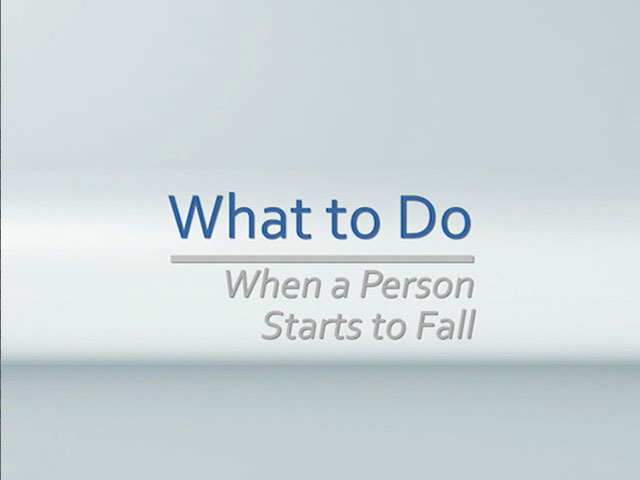What to Do
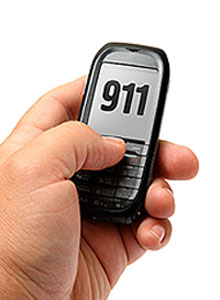
Most falls do not involve injuries or the injuries are minor and do not require a trip to the emergency room. Yet proper care is needed.
- If a person falls, do not try to move them immediately. Wait and try to learn whether they are hurt.
- CALL 911 IF THE PERSON:
- Hit their head and is unconscious or difficult to arouse
- Has a hard time breathing
- Is bleeding from the head or face
- Has a severe headache
- Has slurred speech
- Has a change in consciousness: the person becomes confused about where he or she is
- Has repeated vomiting
- Has a seizure
- If a person falls and can't remember falling, he or she likely fainted. Fainting can be due to many different problems. Report this to the person’s doctor immediately.
- Ask the person to tell you if he or she feels hurt and if so where. Have them lie still for a few minutes before trying to move him or her.
- If there is any bleeding from a scrape or gash:
- Take a clean cloth or gauze bandage and apply gentle pressure for 20 minutes. Do not release the pressure. If the blood spurts or flows after holding pressure Call 911.
- Rinse any wound with clear water. If there is dirt in the wound and it does not rinse away, call the doctor.
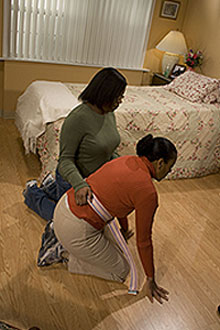
After a few minutes, if a person has no pain and is able to move their arms and legs:
- Have them crawl to a nearby couch or chair
- As the person faces the chair, help him or her to get up onto both knees into a tall kneeling position with their arms on the chair.
- Have the person bring their stronger leg forward into a half kneeling position.
- Then with the person using their arms to help lift their body—assist them to a standing position or a partial stand,
- and pivot them into a sitting position into the chair or couch.
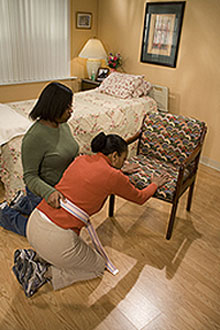
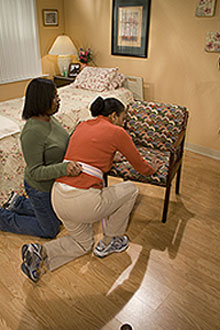
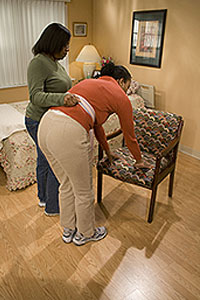

After a few minutes, if a person is ready to get from the chair, ask if he or she still hurts anywhere. If they have trouble walking or moving their arm, hand or foot, take the person to the emergency room.
If the person gets up after a few minutes and says he or she feels fine, keep an eye on them. Watch to see if they walk or move about differently, become sleepy, or take a nap and become difficult to wake up. If you cannot wake them up Call 911.
